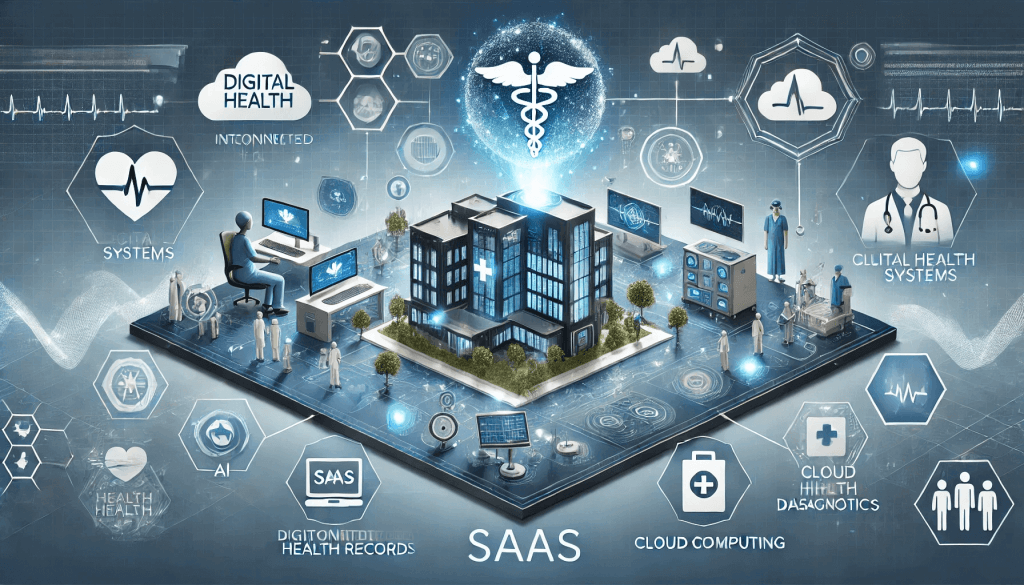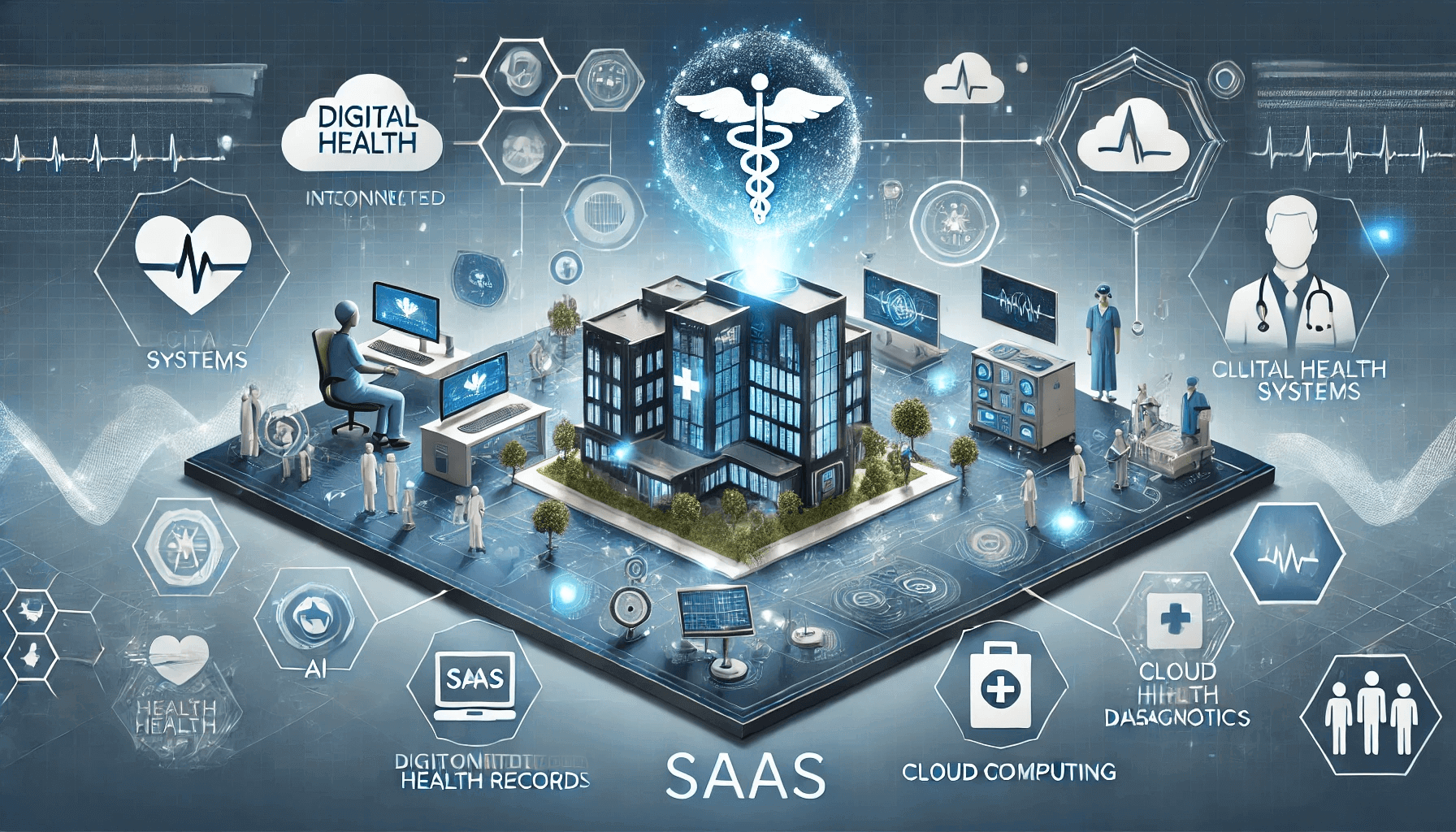The healthcare industry is undergoing a profound transformation, driven by the integration of cutting-edge technology into patient care, diagnostics, administration, and research. At the heart of this revolution is Software as a Service (SaaS), a cloud-based delivery model that enables access to powerful tools, scalable infrastructure, and seamless data sharing. SaaS is not just a facilitator—it’s the backbone of health tech advances, offering unparalleled opportunities to improve efficiency, accessibility, and outcomes. Moreover, innovative solutions like R&D tax credit software are helping health tech companies optimize their financial resources, enabling them to reinvest in research and development for groundbreaking advancements in the industry.
In this blog, we’ll explore how SaaS is powering the health tech industry, diving into its benefits, applications, and why it’s indispensable for the future of healthcare.

Understanding SaaS in Healthcare
Software as a Service (SaaS) is a model in which applications are hosted on the cloud and delivered to users over the internet. Unlike traditional software that requires installation and local maintenance, SaaS allows healthcare providers, organizations, and patients to access software from anywhere, using any device with an internet connection.
In healthcare, SaaS solutions span a range of applications, from Electronic Health Records (EHR) and telehealth platforms to AI-driven diagnostics and supply chain management tools. These platforms are designed to be flexible, scalable, and compliant with regulatory frameworks like HIPAA and GDPR, making them ideal for the dynamic needs of the healthcare sector.
Key Benefits of SaaS in Health Tech
The adoption of SaaS in healthcare offers numerous advantages, driving its rapid growth and widespread implementation:
- Scalability
Healthcare needs are constantly evolving, particularly during public health crises like the COVID-19 pandemic. SaaS solutions can scale up or down as required, accommodating growing patient volumes, additional users, or expanded data storage without the need for significant hardware investments.
- Cost Efficiency
Traditional software models require expensive upfront investments in licenses, infrastructure, and IT staff. SaaS operates on a subscription basis, spreading costs over time and eliminating the need for on-premises hardware and ongoing maintenance.
- Accessibility
With SaaS, healthcare providers can access critical tools and patient data anytime, anywhere. This accessibility enhances coordination among multidisciplinary teams, improves decision-making, and enables remote care delivery.
- Interoperability
SaaS platforms are designed to integrate seamlessly with other systems, enabling the exchange of data across disparate applications. This interoperability is crucial for creating unified patient records and fostering collaboration.
- Compliance and Security
Leading SaaS providers offer robust data security measures, ensuring compliance with industry regulations such as HIPAA (Health Insurance Portability and Accountability Act) and HITRUST (Health Information Trust Alliance). Regular updates and advanced encryption protect sensitive patient data.
- Continuous Innovation
SaaS platforms are regularly updated with the latest features and improvements, allowing healthcare organizations to stay at the forefront of technology without additional costs or manual upgrades.
Applications of SaaS in Health Tech
SaaS is revolutionizing multiple facets of healthcare, transforming how providers deliver care, manage operations, and interact with patients.
- Electronic Health Records (EHR)
Cloud-based EHR systems like Epic and Cerner are replacing traditional on-premises solutions. SaaS EHR platforms enable real-time access to patient records, streamline administrative workflows, and support decision-making with integrated analytics.
- Telehealth and Virtual Care
Telehealth platforms, such as Teladoc Health and Amwell, rely on SaaS to connect patients and providers through video consultations, messaging, and remote monitoring. SaaS-powered telehealth has expanded access to care, especially for rural and underserved populations.
- Patient Engagement Tools
SaaS solutions for patient engagement include appointment scheduling, medication reminders, and patient portals. These tools empower patients to take an active role in their care while reducing the administrative burden on providers.
- AI-Driven Diagnostics
Artificial intelligence platforms leverage SaaS to process large datasets, identify patterns, and generate insights. For example, SaaS tools are used for analyzing medical images, predicting disease progression, and personalizing treatment plans.
- Supply Chain Management
Efficient supply chain management is critical for hospitals and clinics. SaaS platforms optimize inventory tracking, procurement, and logistics, ensuring that medical supplies are available when and where they’re needed.
- Clinical Trials and Research
SaaS is transforming clinical trials by streamlining data collection, monitoring, and analysis. Platforms like Medidata and Veeva Systems provide tools for managing trial workflows, ensuring compliance, and accelerating drug development.
How SaaS Enhances Patient Care
At its core, the goal of health tech advances is to improve patient outcomes. SaaS plays a central role in achieving this by:
- Enabling Personalized Medicine
SaaS platforms aggregate and analyze patient data from various sources, such as genomics, wearables, and EHRs. This data enables clinicians to deliver personalized care plans tailored to individual needs and conditions.
- Improving Collaboration
With SaaS, care teams can share patient records, test results, and treatment updates in real time. This fosters collaboration among primary care providers, specialists, and other stakeholders, leading to more coordinated care.
- Expanding Access to Care
SaaS-powered telehealth platforms eliminate geographic barriers, connecting patients with specialists and resources regardless of location. This is particularly valuable for populations in remote or underserved areas.
- Enhancing Preventive Care
Through predictive analytics and proactive patient monitoring, SaaS tools help identify potential health risks early. This enables timely interventions, reducing hospital admissions and long-term costs.
- Streamlining Patient Experiences
From appointment booking to online bill payments, SaaS platforms simplify administrative tasks, making healthcare more convenient and less stressful for patients.
Challenges and Considerations for SaaS in Health Tech
Despite its many advantages, implementing SaaS in healthcare comes with challenges that organizations must address:
- Data Security and Privacy
While SaaS providers invest heavily in security, healthcare organizations must ensure compliance with regulations and guard against breaches. Choosing reputable vendors and conducting regular audits are critical steps.
- Integration with Legacy Systems
Many healthcare providers still rely on outdated, on-premises systems. Integrating SaaS solutions with these legacy systems can be complex and costly, requiring careful planning and execution.
- User Adoption
Switching to SaaS platforms often requires training staff and overcoming resistance to change. Providing comprehensive onboarding and support is essential to ensure successful adoption.
- Cost Management
While SaaS is cost-effective, subscription fees can add up over time. Organizations must evaluate the long-term financial impact and prioritize solutions that deliver measurable ROI.
The Future of SaaS in Health Tech
The role of SaaS in healthcare is poised to grow as advancements in technology and data analytics continue to shape the industry. Key trends driving the future of SaaS in health tech include:
- AI and Machine Learning Integration
SaaS platforms are increasingly incorporating AI and machine learning to enhance diagnostics, predictive analytics, and patient care. These technologies will enable faster, more accurate decision-making.
- Interoperability Standards
Efforts to standardize healthcare data exchange, such as FHIR (Fast Healthcare Interoperability Resources), will improve the integration of SaaS platforms with other systems, creating unified ecosystems.
- Wearable Devices and IoT
The rise of wearable health devices and IoT (Internet of Things) solutions will generate vast amounts of data. SaaS platforms will play a critical role in processing, storing, and analyzing this data to drive personalized care.
- Global Expansion
SaaS solutions are making healthcare innovations accessible in developing countries, where traditional infrastructure is limited. Cloud-based platforms are helping bridge gaps in care delivery and resource allocation.
- Value-Based Care Models
As the healthcare industry shifts toward value-based care, SaaS tools will be essential for measuring outcomes, optimizing workflows, and managing population health.
Why SaaS is Indispensable for Health Tech
SaaS is more than a technology trend—it’s a strategic necessity for the healthcare sector. By providing flexible, scalable, and cost-effective solutions, SaaS empowers organizations to overcome operational challenges and focus on their core mission: delivering high-quality patient care.
Whether it’s enabling remote consultations, improving operational efficiency, or driving breakthroughs in research, SaaS is at the heart of health tech innovation. Its role will only become more critical as the industry continues to embrace digital transformation.
Conclusion
The integration of SaaS into healthcare is revolutionizing the industry, making it more accessible, efficient, and patient-centric. From telehealth and AI diagnostics to EHRs and supply chain management, SaaS is driving advancements across every aspect of health tech.
For healthcare providers, investing in SaaS is not just about staying competitive—it’s about delivering better outcomes for patients and preparing for the future of medicine. As technology continues to evolve, SaaS will remain the backbone of health tech advances, shaping a new era of care that is smarter, more connected, and more personalized.

Chase Ortiz is part of the team at PaigeSimple, where he takes care of all the advertising requests. With a sharp eye for detail, Chase makes sure every advertising opportunity is handled smoothly, helping the site grow and reach more people. His ability to manage these tasks efficiently makes him an important part of the team.

